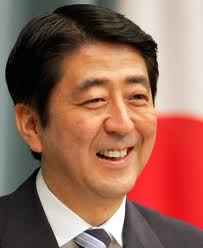My Japan experience at TICAD V
 The just-ended 5th Tokyo International Conference on African Development (TICAD V) presented Japan as a country of beautiful people with a rich cultural diversity and delicious medicinal dishes.
The just-ended 5th Tokyo International Conference on African Development (TICAD V) presented Japan as a country of beautiful people with a rich cultural diversity and delicious medicinal dishes.
Advertisement
African Journalists who covered the conference at the invitation of the Japanese government had the opportunity to appreciate Japanese technology, as guides from the Japanese Ministry of Foreign Affairs conducted journalists round some Japanese car manufacturing companies, including Nissan.
Structures
Yokohama, the city in which the conference was held, and Tokyo, the Japanese capital, radiates from the high rise buildings scattered across the richest Asian nation.
I had the privilege to report on the bilateral meeting between the President of Ghana, Mr John Dramani Mahama and the Japanese Prime Minister, Mr Shinzo Abe, where the two leaders renewed their commitment to strengthen bilateral ties.
When it comes to architecture, the Japanese do what they can do best with blended and beautiful old fashioned architecture with skyscrapers.
One outstanding thing about the country is the fact that everything is positioned with precision such as places reserved for train stations, bus stops, supermarkets and recreational centres.
Neatness
Yokohama, with a population of 3.7 million, is the capital city of Kanagawa Prefecture and the second largest city in Japan by population after Tokyo, and most populous municipality in Japan. It lies on Tokyo Bay, south of Tokyo, in the Kantō region of the main island of Honshu.
Tokyo, officially Tokyo Metropolis, is one of the 47 prefectures of Japan. Tokyo is the capital of Japan, the center of the Greater Tokyo Area, and the largest metropolitan area in the world with a population of 13.23 million.
What struck me further was the cleanness of the water bodies in Yokohama and Tokyo. The plastic bags and solid materials found in water bodies in some parts of Ghana are absent in Japan.
Discipline
Discipline is said to be part of the Japanese culture. Despite their huge population , the Japanese are orderly and obey the rules governing their movements.
A striking feature was that motorists do not jump the traffic light; they stop when they get the signal and will not move even if no vehicle is coming from the opposite direction.
More striking is the patience of pedestrians to wait for traffic light signal before they cross the road; even when there are no oncoming vehicles, the pedestrians will wait till the signal is on for them to cross.
Anytime I saw the Japanese waiting patiently for the traffic light signal, I recall the startling statistics of the number of pedestrians killed on Ghana's roads.
The latest statistics
In fact, my friends and I gradually imbibed that discipline of waiting for the traffic light signal before crossing. The reason was that we would become odd if we flouted that traffic regulation. I remember an occasion when we pulled back one of our friends who started crossing before the traffic light signal was on.
I was indeed impressed by our unanimous condemnation of his action. But my worry was that we would have joined him back in Ghana in flouting the rules instead of pulling him back.
The debate then started as to why the Japanese are able to respect the traffic regulations while many Ghanaians are unable to do so. The conclusion was that first they were a disciplined people. Again, the system in terms of regulating activities and meting out punishment for wrong doing is intact.
Ghanaians cannot be faulted totally because the traffic lights for pedestrian crossing are absent at most places. Even where the traffic lights are positioned, some recalcitrant drivers refuse to stop for pedestrians to cross.
Language barrier
One major downside is that majority of Japanese do not speak English; so it is difficult communicating with them.
They are not under any obligation to speak English, but the language will help them in their communication with English-speaking visitors to their country.
At least I am able to speak a few lines in Japanese such as ‘hello’ and ‘good morning’.
An insight into Japan
Japan has a total of 6,852 islands extending along the Pacific coast of East Asia. The country, including all of the islands it controls, lies between latitudes 24° and 46°N, and longitudes 122° and 146°E.
About 73 per cent of Japan is forested, mountainous, and unsuitable for agricultural, industrial or residential use. As a result, the habitable zones, mainly located in coastal areas, have extremely high population densities. Japan is one of the most densely populated countries in the world
Japan is a constitutional monarchy where the power of the emperor is very limited. As a ceremonial figurehead, he is defined by the constitution as "the symbol of the state and of the unity of the people". Power is held chiefly by the Prime Minister of Japan and other elected members of the Diet, while sovereignty is vested in the Japanese people.
As of 2012, Japan is the third largest national economy in the world, after the United States and China, in terms of nominal GDP, and the fourth largest national economy in the world, after the United States, China and India, in terms of purchasing power parity.
By Sebastian Syme / Graphic.com.gh / Ghana
Writer’s email: [email protected]




